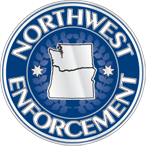Using Crime Prevention Through Environmental Design (CPTED) To Enhance Your Security Services

It’s natural to seek the help of a professional when you are facing a problem that you are unfamiliar with. When it comes to the safety and security of your home or business, there are some things you can do without the help of a professional! Crime Prevention Through Environmental Design (or CPTED for short) is a set of principles for property owners to keep in mind when considering the safety and security of their facilities.
Looking at your property while considering the following 5 principles will cover all bases:
- Natural Access Control leverages property design to naturally control the flow of foot traffic in and out of a property. Strategic placement of natural pathways, lighting choices, vegetation like trees, shrubs and bushes, and fences are all ways you can naturally control the flow of traffic to and from your property. This CPTED element helps guide visitors along the intended path as they approach, so it is easily noticeable if someone is in an area they should not be.
- Natural Surveillance incorporates the help of others: form a network of neighbors and property owners around your building so you have extra eyes on your property when you’re not there. Keep these groups in the loop when you will be away from the property for extended periods (vacations) so they can pay attention to any unusual activity. Keep vegetation trimmed and landscaping neat so that there are clear lines of sight through to your property, minimizing or eliminating places to hide.
- Territorial Reinforcement is the concept of making your property boundaries clear. Similar to the Natural Access Control layer, Territorial Reinforcement employs the use of vegetation and fencing to clearly define property lines, making it easier to identify when someone is within your property boundaries. Gates and “No Trespassing” signage are other ways to achieve this clarity.
- Maintenance focuses on preserving the condition of your property, including landscaping/lawn care, lighting, fencing. It is important to keep vegetation trimmed and access control features in good working condition, so it is clear that the property is being actively cared for. Overgrown lawns and hedges, rusty or inactive fences, and burned out lights are all indications that the property is a vulnerable target.
- Activity Support combines the other four CPTED principles through active use of the property. When you regularly maintain outdoor areas, you make them more appealing to be used lawfully by clients or visitors, which provides the most Natural Surveillance possible.
Read on to see how you can make your private security patrols the most effective, working alongside your own CPTED efforts!
CPTED Principles for the Home or Business Owner
Some ways property owners can utilize CPTED principles for their own properties:

- Set alarms nightly (and test regularly)
- Lock vehicles, ensuring that keys and valuables are secured
- Communicate with neighbors to identify and react to trends
- Park work vehicles in well-lit areas within camera views when gone overnight
- Leave exterior and motion lights on to limit low visibility
- Secure exterior outlets
- Turn off water spigots
- Set lawn/garden sprinklers on a timer
- Conduct monthly light audits to eliminate low visibility areas
- Keep vegetation trimmed
- Do not store small decorative items outside: they can be stolen, vandalized or thrown through windows
- Lock trash enclosures and store bins inside at night
- Paint over graffiti promptly
- Keep monitoring and security companies informed about business operating hours
- Always file police reports when incidents occur
- Consider adding or increasing security for extra coverage (including after-hours alarm response)
Private Security Partnerships
In addition to the CPTED tips above, partnering with private security professionals can help you achieve a higher level of protection than only looking out for yourself. In addition to the steps listed above, private security adds another layer of protection by helping with things like:

- Establishing a presence to deter criminal behavior (especially during off-hours when you’re not at your business)
- Provide security assessments to address vulnerabilities at your property
- Address resident or tenant reports of suspicious behavior, including well-documented reports for property management
- Provide third-party documentation about the state of your property after-hours
- including periodic light audits (so you know which exterior lights do NOT come on at night)
Interested in learning more about private security options for your property? Reach out to us today!
The importance of Reporting
Now that you are actively employing the CPTED principles outlined above, what happens if your property DOES suffer a loss?
In the absence of accurate reporting, it may appear as though crime rates are low. In reality, this data is often inaccurate because there is likely a high volume of crime that is never reported, so authorities do not have information about the full scope of the issue. When accurate reporting takes place, it can sometimes initially look like crime rates have gone up–but that’s only because the crime that is already occurring is being consistently, accurately recorded. It will look worse before it gets better!
Partnering with private security can help ensure you get all the details you need to submit reports to your insurance, police, and the District Attorney. State and federal funding sources rely on reported crime data to make funding decisions, so it is imperative that you take the time to accurately document and report property damage and loss!

